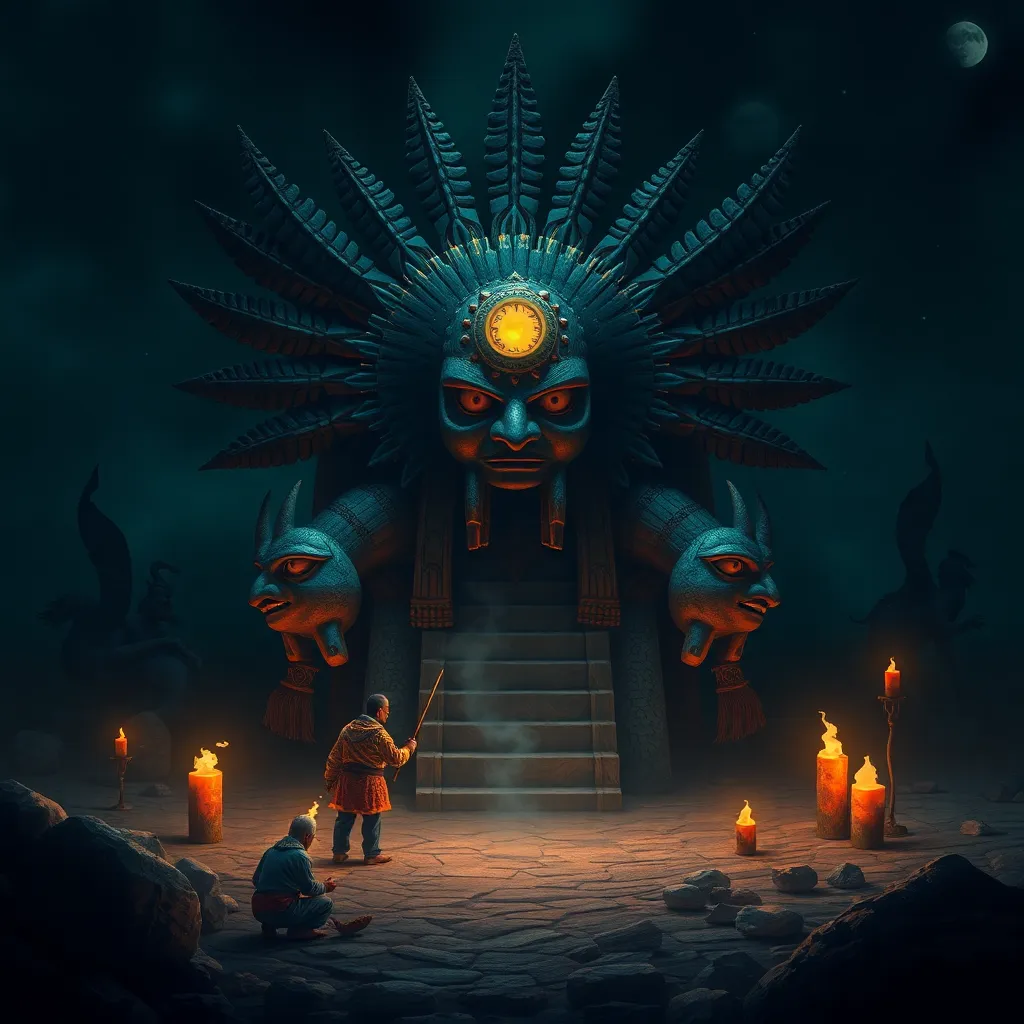The Ahuizotl: A Cautionary Tale of Greed and the Dangers of the Unknown
I. Introduction
The Ahuizotl is a fascinating creature rooted deeply in Mesoamerican mythology, particularly within Aztec culture. This mythological being, often described as a dog-like creature with a hand on its tail, represents both the allure and peril of unchecked greed and the unknown. As we delve into this legendary figure, we will explore its significance in Mesoamerican culture, the themes of greed, and the inherent dangers posed by the unknown.
II. The Legend of the Ahuizotl
A. Description of the creature in mythology
The Ahuizotl is often depicted as a small, aquatic creature resembling a dog with an elongated body, sharp claws, and a hand at the end of its tail. It is said to inhabit rivers and lakes, luring unsuspecting victims to their doom with its deceptive appearance.
B. Origins of the Ahuizotl in Aztec folklore
In Aztec folklore, the Ahuizotl is considered a guardian of water, but it is also a harbinger of tragedy. Legends tell of the creature dragging people underwater, sometimes to claim them as sacrifices. This duality reflects the reverence and fear associated with water in ancient cultures.
C. Variations of the tale across different cultures
Various Mesoamerican cultures have their interpretations of the Ahuizotl. For instance, some tales depict it as a benevolent creature that protects sacred waters, while others emphasize its malevolent nature, warning against the dangers of approaching unknown territories.
III. Symbolism of the Ahuizotl
A. Representation of greed and desire
The Ahuizotl symbolizes the greed that can lead individuals to their demise. It draws people in with the promise of riches or safety, only to ensnare them in its deadly embrace. This reflects a broader theme of how desire can cloud judgment.
B. The creature as a metaphor for the unknown dangers of nature
As a creature of water, the Ahuizotl embodies the unpredictable nature of the environment. It serves as a reminder that nature can be both beautiful and treacherous, urging respect for the unknown forces that govern our world.
C. Analysis of the Ahuizotl’s physical attributes and their meanings
- Hand on its tail: This feature symbolizes both the allure and danger of temptation.
- Dog-like appearance: Represents loyalty and companionship, contrasting with its predatory nature.
- Aquatic habitat: Highlights the duality of water as a source of life and a potential grave.
IV. Historical Context: Greed in Mesoamerican Societies
A. The role of wealth and materialism in ancient civilizations
In Mesoamerican societies, wealth and material possessions were often intertwined with power. The accumulation of gold, jade, and other valuables was a sign of status, leading to intense competition and conflict among rival factions.
B. How greed influenced societal structures and conflicts
Greed often fueled wars between city-states, as leaders sought to expand their territories and acquire more resources. The Ahuizotl legend serves as a cautionary tale about the destructive nature of such desires.
C. Connections between the Ahuizotl legend and historical events
The myth of the Ahuizotl may reflect the historical context of human sacrifices made in Mesoamerican cultures, where the need to appease the gods often led to extreme measures. The creature’s narrative intertwines with real-life events, emphasizing the consequences of greed and fear.
V. The Dangers of the Unknown
A. Exploration of fear and fascination with the unknown
Humans have always been drawn to the unknown, whether it be uncharted territories or unexplained phenomena. The Ahuizotl embodies this duality of fear and fascination, warning against the dangers that lurk beneath the surface.
B. The impact of the Ahuizotl tale on understanding natural phenomena
The tale of the Ahuizotl helps explain natural occurrences, such as drowning or unexplained disappearances near water bodies. It serves as a narrative device to make sense of the unpredictable elements of nature.
C. Lessons drawn from encounters with the unfamiliar
- Respect for nature’s power.
- Understanding the importance of caution when exploring unknown territories.
- Recognizing the consequences of ignoring warnings.
VI. The Ahuizotl in Modern Culture
A. Adaptations and interpretations in literature and media
In contemporary culture, the Ahuizotl has appeared in various forms, from literature to movies. Its depiction often shifts, reflecting current societal fears and values, yet the core themes of greed and danger remain prevalent.
B. The creature’s influence on contemporary discussions about greed
The Ahuizotl continues to serve as a metaphor in discussions about environmental exploitation and materialism, reminding us of the perils of greed in a modern context.
C. The relevance of the Ahuizotl today
As society grapples with issues like climate change and resource depletion, the Ahuizotl’s tale serves as a pertinent reminder of the consequences of our actions and the importance of respecting the balance of nature.
VII. Moral Lessons and Cautionary Themes
A. Greed as a destructive force
The Ahuizotl exemplifies how greed can lead to destruction, both personally and societally. Its story warns that unchecked desires can result in dire consequences.
B. The importance of respecting nature and its mysteries
Understanding the Ahuizotl’s place in mythology encourages a greater respect for the natural world and its unknown aspects. It reminds us to approach nature with caution and reverence.
C. The Ahuizotl as a warning against the consequences of unchecked desires
The legend serves as a timeless warning that pursuing desires without regard for their consequences can lead to unforeseen dangers.
VIII. Conclusion
In summary, the Ahuizotl is not just a mythological creature; it is a complex symbol of greed, the unknown, and the dangers that accompany our desires. Through its story, we learn valuable lessons about the importance of caution, respect for nature, and the consequences of unchecked ambition. As we reflect on the Ahuizotl and its enduring legacy, we are called to examine our personal and societal attitudes towards greed and the mysteries that lie beyond our understanding.



